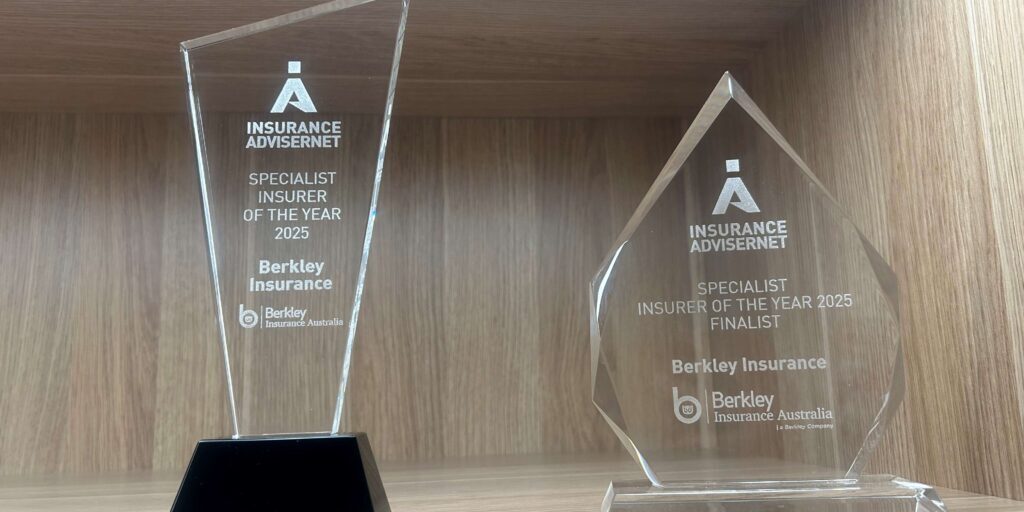
Risk Management | Why is Professional Indemnity Insurance so important?
Risk Management for when you get it wrong.
If your business provides professional advice or services to clients, then you’re most probably aware of Professional Indemnity Insurance.
Professional Negligence – What happens when you give the wrong advice?
Many mistakes are quite minor in nature and can be easily rectified. However, even seemingly innocent and understandable errors can sometimes have disastrous ramifications for businesses.
Professional Negligence claims come about when a client suffers a financial loss as a direct result of following a professional’s incorrect or negligent advice.
If you are offering professional services and advice to clients in exchange for service fees, then you have a “duty of care” to them. Clients rely on you to provide them with the most accurate and dependable advice concerning their business or personal affairs. One misleading statement, or sloppy mistake on your part could have a shattering effect on their finances, investments or other major life affairs.
Similarly, any errors and omissions made by you or your staff, can lead your company into financial ruin. Imagine being liable to pay thousands to your client in compensation payments. Not to mention the staggering legal and investigative expenses involved with Professional Negligence claims.
Additionally, a company’s reputation can be damaged if their Professional Negligence case receives high media coverage.
Who needs Professional Indemnity Insurance?
Occupations who require Professional Indemnity protection include Lawyers, Accountants, Financial Planners, Graphic Designers, Engineers, Architects and Information Technology Consultants to name just a few.
Basically, any profession that offers advice or services to clients should have a current Professional Indemnity Insurance policy in place.
Indeed, the governing professional bodies of certain industries command that their members hold up-to-date Professional Indemnity cover. They can impose fines, suspensions and even ban members who fail to obtain this essential type of protection.
When could a Professional Negligence claim arise?
The following hypothetical scenarios could likely lead to the initiation of Professional Negligence claims:
- An engineer designs a concrete slab for a house, however, when the house is built the slab moves slightly and causes cracks in the house.
- A married couple loses a substantial amount of money after following their Financial Planner’s poor investment advice.
- An accountant provides incorrect advice on the tax treatment of expenses.
- A lawyer does not commence legal proceedings prior to the correct date resulting in the client’s claim being time barred by statute.
- An architect who is contracted as the project manager sub-contracts a geotechnical engineer to design footings. The footings don’t act as intended as a result of poor design. The architect is liable to the client for the errors of the geotechnical engineer and will then have to attempt recovery from the engineer and in most situations will not be able to recover anywhere near 100% of their liability.
Reduce the risk of receiving a Professional Negligence claim
Mistakes are unavoidable. That’s why we have Professional Liability Insurance. However, there are ways to minimise your chances of ever having to deal with a Professional Negligence claim.
Adopt some of these suggestions into your daily workplace operations:
- Send regular, company-wide email directives reminding your employees not to offer advice to clients on topics that they are unqualified to give information about. Instruct them to recommend their clients consult professionals within those particular industries instead.
Such an example could involve a solicitor giving taxation advice to his client.
Although he may possess some Accounting knowledge, he is not a qualified Tax and Business Services Accountant. If he gives a client the wrong advice, his company could be hit with a lawsuit.
- Make summarising face-to-face and telephone consultations with clients compulsory for all staff. This would mean writing a brief note on what was discussed with the client during the meeting, including any recommendations that were made.
Always request that the client signs the document, confirming they agree with what transpired. For telephone consultations, email your notes to the client and request they express their agreement in a return email.
- Train staff on the absolute necessity of client confidentiality. Advise them not to discuss client affairs outside of the work environment.
What about Professional Indemnity Risk Management steps per profession?
- Accountants / Financial Planners – must stay up to date with rule changes to tax law or superannuation entitlements. Many professional accountants and Financial Planners have suffered claims when they were unaware of the tax treatment of items and even more Financial Planners have had issues when the Government changed superannuation contributions limits.
- Consulting Engineers – The “know your client” rule. Client selection is an essential area that has little to do with engineering design expertise. Knowing your client, understanding what the client’s reaction will be to resolving issues and walking away from a project if the client is litigious are as important as being able to design a building. Many claims arise from a “difficult” client who’s first reaction is to sue as opposed to find a viable solution. These claims are expensive and don’t necessarily arise out of poor or inadequate design but a lack or true understanding that issues will arise during a project and the best outcome is obtained by engaging with all design professions involved in the project.
- Architects – should ensure they don’t venture into areas where they lack the real work experience. Architects need to read and know the implications of contracts. If you are the project manager you are liable for anything that goes wrong with the project. If you are the noted on a contract as the Construction manager then you are responsible for the whole project.
- Graphic designers – if you create a new logo that coincidentally looks like an existing logo you could be held liable for a breach of copyright. All of your designs need to contain a disclaimer that passes the costs of a breach of copyright on to your client
This is not an exhaustive list. Can you think of any other ways to safeguard your business against legal action from clients?
Professional Indemnity with Berkley Insurance Australia
Just think, would you have the funds available to cover all the staggering costs involved in paying out a Professional Negligence claim? Without Professional Liability Insurance, how would your business survive?
Fortunately, your broker can offer you the best advice in choosing protection for businesses against the detrimental impact of Professional Negligence litigation.
Let’s face it, despite all your careful planning and cautiousness, like the rest of us, you have your share of “off” days!
That’s why Berkley Insurance Australia are here, right beside you on the “on” and “off” days.
Related Links
Quote and Bind a Policy Instantly
Berkley Insurance Australia Professional Indemnity Policy Wording (Miscellaneous Professions)
Should businesses consider Management Liability?
Important Notice
Berkley Insurance Company (limited company incorporated in Delaware, USA) ABN 53 126 559 706 t/as Berkley Insurance Australia is an APRA authorised general insurer. Information provided is general only, intended for brokers and has been prepared without taking into account any person’s particular objectives, financial situation or needs. Insurance cover is subject to terms, conditions, limits, and exclusions. When making a decision to buy or continue to hold a product, you should review the relevant policy documents.
Share this post on
Why Run-Off Cover Matters: A Critical Consideration for Professional Indemnity Insurance
Inside Berkley Insurance Australia: An Interview with CEO Tony Wheatley
Berkley Insurance Australia Wins Specialist Insurer of the Year for Fourth Consecutive Year


